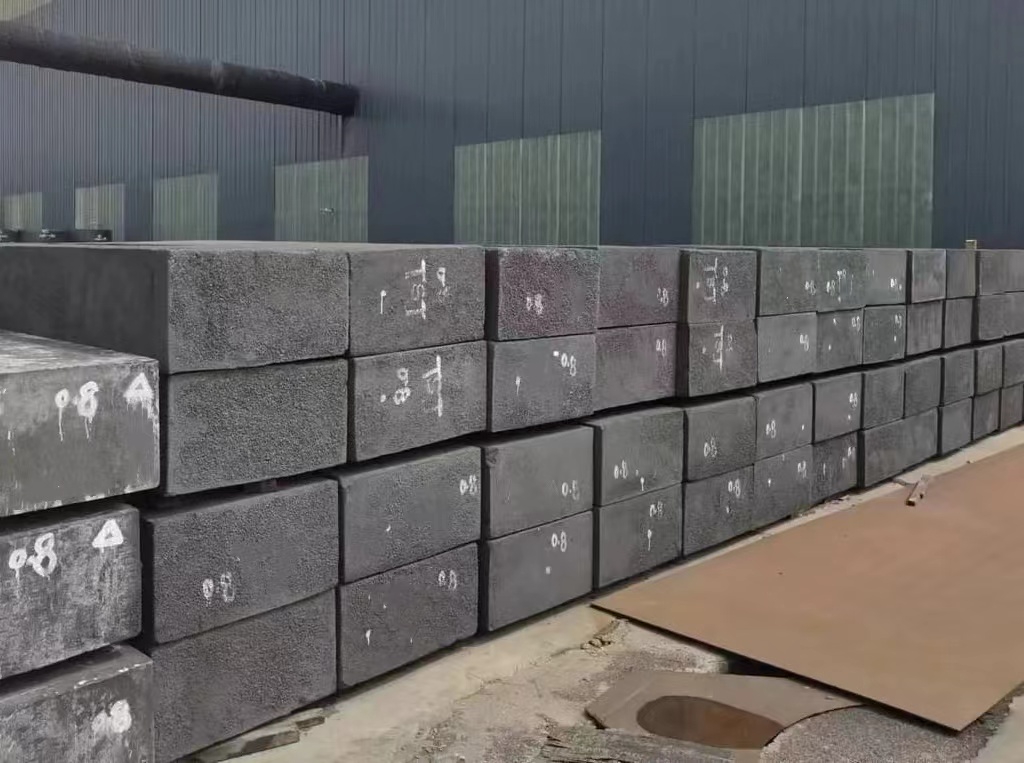Le processus de production de blocs de graphite comprend le mélange des matières premières, le pressage, le grillage, l'imprégnation et la graphitisation. Examinons de plus près chaque étape de la production.
Table des matières
ToggleMatières premières
Comprend le coke de pétrole, le coke d'aiguille et le goudron de houille. Le coke de pétrole est composé de carbone et a généralement une faible teneur en cendres. Il s'agit de la principale matière première pour la fabrication de produits en graphite artificiel. Le coke d'aiguille a un faible coefficient de dilatation thermique et est facilement graphitisé. Le goudron de houille est utilisé comme liant et agent d'imprégnation.
Mélange et pétrissage
Les gros morceaux de coke de pétrole calciné et de coke d'aiguille sont concassés, broyés et tamisés. Ensuite, une certaine quantité de liant est utilisée pour mélanger et homogénéiser le mélange en vue de son utilisation.
Moulage
L'ébauche malaxée est extrudée en forme rectangulaire dans l'équipement de moulage. À ce stade, le produit a non seulement une forme et une taille, mais aussi une certaine densité et une certaine résistance.
Torréfaction
Le cycle de torréfaction est relativement long, généralement de 22 à 30 jours. Au cours de ce processus, le goudron de houille contenu dans l'ébauche verte est cokéfié et 10% des matières volatiles sont éliminées. Les propriétés physiques et chimiques de l'ébauche de graphite changent, la densité et la résistance diminuent. Sa résistance mécanique est considérablement améliorée.
En général, le graphite isostatique doit être torréfié trois fois pour augmenter sa densité volumique.
Imprégnation
Ce processus consiste à placer le corps vert dans un récipient sous pression et, sous certaines conditions de température et de pression, l'imprégnant liquide est inséré profondément dans les interstices du produit. L'objectif est de réduire la porosité, d'augmenter la densité et la résistance mécanique et d'améliorer la conductivité électrique et thermique.
Graphitisation
Le processus de traitement à haute température, qui consiste à chauffer l'ébauche dans un four à micro-ondes, permet d'obtenir un résultat optimal. four de graphitisation à plus de 2300 degrés Celsius. Transformer le carbone amorphe en une structure cristalline ordonnée de graphite.
L'objectif est d'améliorer la conductivité électrique et la conductivité thermique des matériaux en carbone. En même temps, il améliore la stabilité chimique. Il est important d'éliminer les impuretés et d'améliorer la pureté.
Contrôle de la qualité
Tout d'abord, il faut frapper sur l'aspect du produit pour voir s'il n'y a pas de fissures. Ensuite, il faut vérifier si la densité et la résistance répondent aux exigences.
Usinage
Le produit est coupé, tourné et poli, etc., et transformé en produits finis selon les exigences du client.

